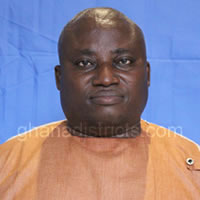Location and Size
The District is located in the South-Eastern part of the Ashanti Region, and lies within latitude 40” North and 6 degrees 22” North and longitude 1degree West and 1degree 38”West. The District shares boundaries with Obuasi Municipal and Adansi North Districts to the North and North East respectively. It also shares North-East and South-East of its boundaries with Amansie Central and Bosome Freho Districts of the Region in that order. The other districts with which the District shares boundaries are Assin District in the Central Region to the South and Akyemanso and Birim South Districts of Eastern Region to the East.The district is further bounded to the West by River Offin and the East by River Pra. The district has a total land area of 1328.2 square kilometres which is approximately 4.0 percent of the total land area of Ashanti Region. About 25.2 (334.5sq.km) of this total land area is made up of forest reserves.
Topography
The land ranges from flat to gentle undulating landscape, with average elevation of about 350m above sea level. Generally, the district is hilly with several rivers and streams. Major rivers such as Pra, Fosu, Muma and Subin are in the district and are the major drainage channels. Minor streams also drain into the major rivers.
Climate
The climatic condition in the district is generally favourable, with mean monthly temperatures ranging between 26 degrees Celsius and 29 degrees Celsius. February and March are the hottest months in the year. The extensive forest reserves in the district ensures a very good rainfall distribution pattern, which is characterized by two raining seasons with peak periods around May to June in the major rainy season and October in the minor season. Average annual rainfall figures are between 160cm and 180 cm with an average of 150 raining days recorded every year.
Vegetation
The Adansi South District is within the rain forest belt and it is characterized by moist semi deciduous forest with thick vegetative cover and growth. In some parts of the district, the natural vegetation is steadily degenerating into secondary forest. Relatively, little virgin forest remains outside the main forest reserves and this condition can be attributed to persistent slash and burn methods as well as the incidence of bush fires in the dry season. Despite these poor environmental practices with their detrimental effects on the vegetation of the district, forest reserves still exist in the district.
Soil
The Agricultural Extension Department of the district describes the district’s soil as very fertile with a high humus content, which have the capacity to support tree crops such as cocoa, oil palm, cola nuts as well as staples (cassava and plantain) and a variety of vegetables. The identified types of soils in the District includes; Juaso – Morso Association, Swedru – Nsaba Simple Association, Bekwai – Oda Compound Association and Awaham – Kakum - Kyekyerewere Association, among others.
Date Created : 12/5/2017 4:15:02 AM




